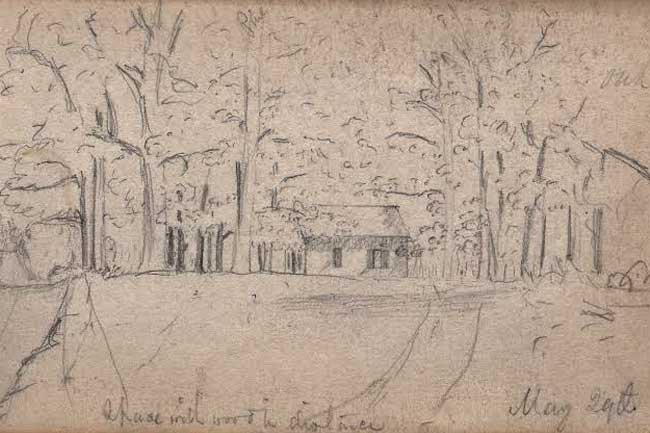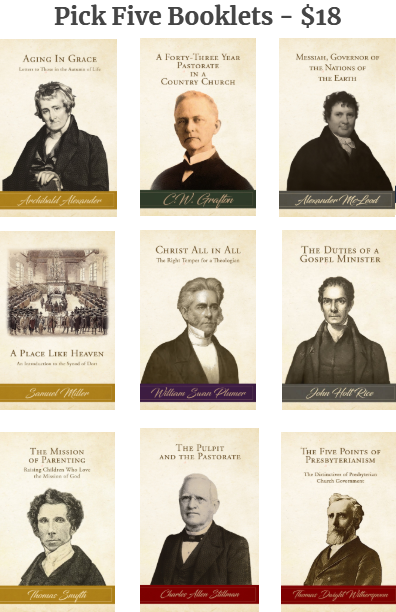Receive our blog posts in your email by filling out the form at the bottom of this page.
"I can tell you that I am as happy as perhaps Creation can make me: I enjoy all the Necessaries and most of the Conveniences of Life; I have a peaceful Study, as a Refuge from the Hurries and Noise of the World around me; the venerable Dead are waiting in my Library to entertain me, and relieve me from the Nonsense of surviving Mortals; I am peculiarly happy in my Relations, and Providence does not afflict me by afflicting them. In short, I have all a moderate Heart can wish; and I very much question if there be a more calm, placid and contented Mortal in Virginia.” — Samuel Davies, August 1751 Letter to John Holt
Samuel Davies was 300 years ago on this day in history, November 3, 1723, near Bear, Delaware. His parents were David and Martha Thomas Davies, and were of Welsh descent. He was a "son of prayer," and thus Samuel was named by his mother for Samuel the prophet. Originally, the Davies family was Baptist, but Martha came to embrace Presbyterian doctrine and her family was put out of the Baptist church. Samuel was educated first, it is believed, by William Robinson (who would later play such an influential role in Davies' pastoral career) at the English school at Hopewell (New Jersey) Presbyterian Church, and later at the Faggs Manor (Pennsylvania) academy run by Samuel Blair, who was not only a mentor, but a dear friend.
Birthplace of Samuel Davies, near Bear, Delaware (photo by R. Andrew Myers).
In July 1743, William Robinson preached the first Presbyterian sermon ever delivered in Hanover County, Virginia. The people of Hanover were so thankful for his ministry that they took up a collection, which Robinson ensured was used to assist Samuel's theological education. Three years later, Davies was licensed to preach by the Presbytery of New Castle. He was ordained to the ministry in February 1747, and commissioned as an evangelist to minister to the congregation at Hanover, Virginia, and surrounding counties. He traveled south with John Rodgers, and became settled in his new Virginia home, accepting a call to serve as pastor of the Polegreen Church, beginning a very fruitful ministry. Davies earned the title "Apostle to Virginia" and "Apostle of the Great Awakening in Virginia." One particular focus of his ministry involved the spiritual care of slaves within his ecclesiastical bounds.
1862 sketch of Polegreen Church before it was destroyed in 1864.
Historic Polegreen Church in Mechanicsville, Virginia, as it appears today.
He was married to Sarah Kirkpatrick in 1746. She and her unborn son died the following year. In 1748, Davies married Jane Holt, whom he called "Chara," and with whom they had six children, one of whom died at birth. Jane was the muse who inspired several of Davies' poems.
Davies and Gilbert Tennent traveled to the British Isles in 1753-1755 on a fundraising mission for the College of New Jersey, and the journal that Davies kept to record his experiences has been published. In 1759, he was called to serve as President of the College of New Jersey, replacing Jonathan Edwards. His departure from Hanover was painful for him because of the love he had towards his flock, but he answered what he believed was the call of duty. He set about cataloguing the library and his brief tenure at Princeton was very much appreciated by students and Trustees alike.
He was the author of some treatises, as well as many letters, hymns (he is considered the first American-born hymn-writer), poems and sermons, some of which were published in his lifetime, and which were published in several volumes posthumously. His preaching helped to inspire frontier men who were fighting in the French and Indian War, and one person in particular who was deeply impressed with his homiletics was Patrick Henry, who a generation later became one of America's greatest orators. Davies was referred to by Martyn Lloyd-Jones as "the greatest preacher you have ever produced in this country."
On January 1, 1761, Davies delivered his Sermon on the New Year on the text Jer. 28:16, stating “it is not only possible — but highly probable, that death may meet some of us within the compass of this year.” Like previous Presidents of the College of New Jersey who had preached on this passage, such as Jonathan Edwards and Aaron Burr, Sr., Davies did indeed die in the selfsame year. He contracted a cold, and after bleeding by a physician, he got an infection and became mortally ill, breathing his last at home on February 4, 1761, at the age of 37. He was laid to rest at Princeton Cemetery, and his funeral sermon was preached by Samuel Finley. Thomas Gibbons, who preached a sermon commemorating Davies' life and death in England, published the first set of Davies' sermons in 1766. Notable biographies of Davies include George W. Pilcher, Samuel Davies: Apostle of Dissent in Colonial Virginia (1971); Dewey Roberts, Samuel Davies: Apostle to Virginia (2017); and Joseph C. Harrod, Theology and Spirituality in the Works of Samuel Davies (2019).
Grave of Samuel Davies at Princeton Cemetery, Princeton, New Jersey (photo by R. Andrew Myers).
He once told his auditors: "Whatever, I say, be your Place, permit me, my dear Youth, to inculcate upon you this important instruction, IMBIBE AND CHERISH A PUBLIC SPIRIT. Serve your Generation. Live not for yourselves, but the Publick. Be the Servants of the Church; the servants of your Country; the Servants of all. Extend the Arms of your Benevolence to embrace your Friends, your Neighbors, your Country, your Nation, the whole Race of mankind, even your Enemies. Let it be the vigorous unremitted Effort of your whole Life, to leave the World wiser and better than you found it at your Entrance (Religion and Public Spirit: A Valedictory Address to the Senior Class, Delivered in Nassau-Hall, September 21, 1760 [1762])." It can certainly be said of Davies that he left the world wiser than he found it.



























